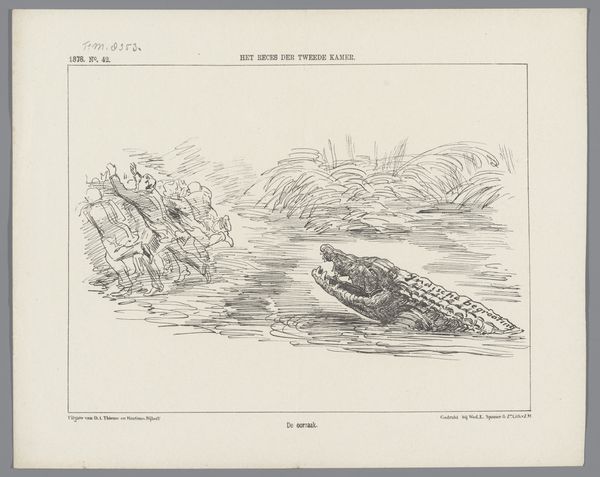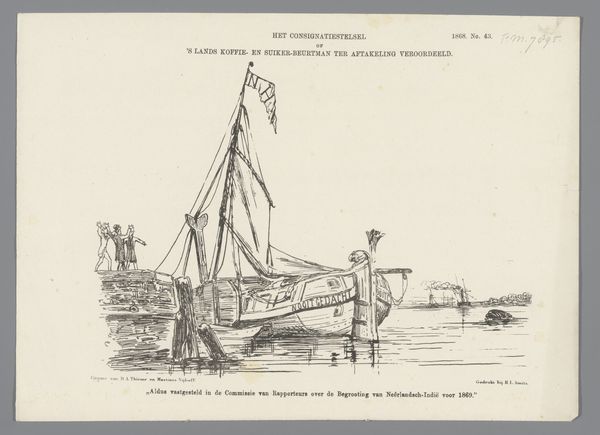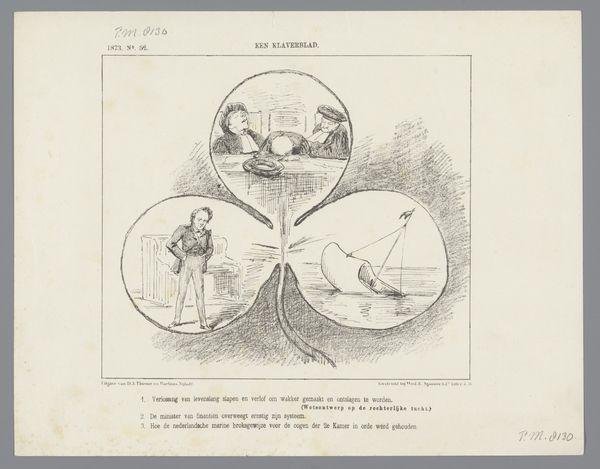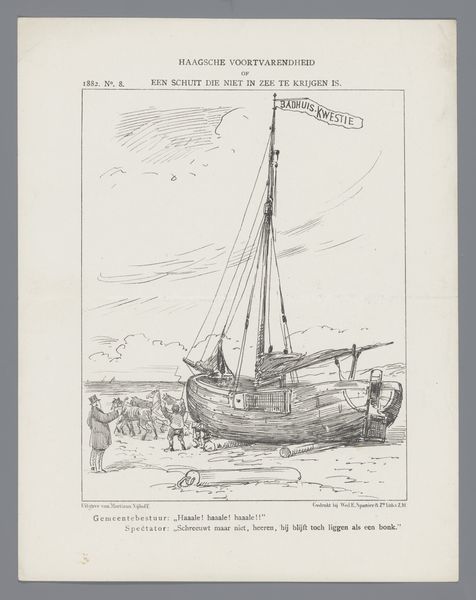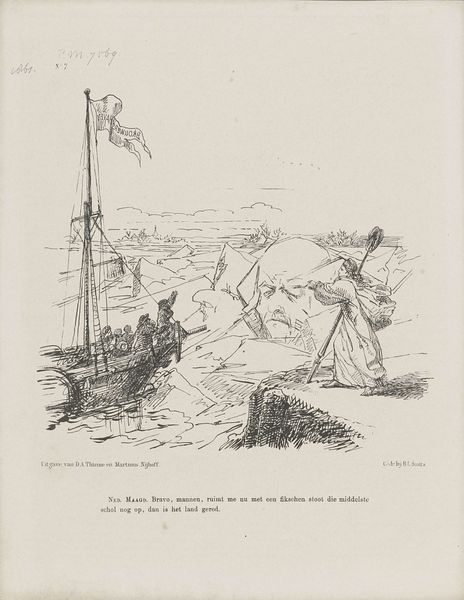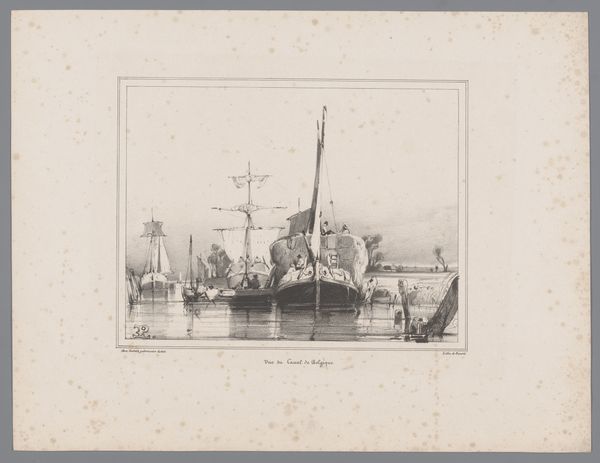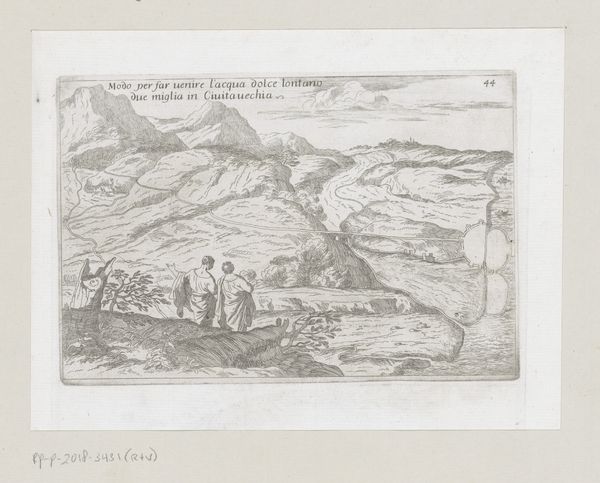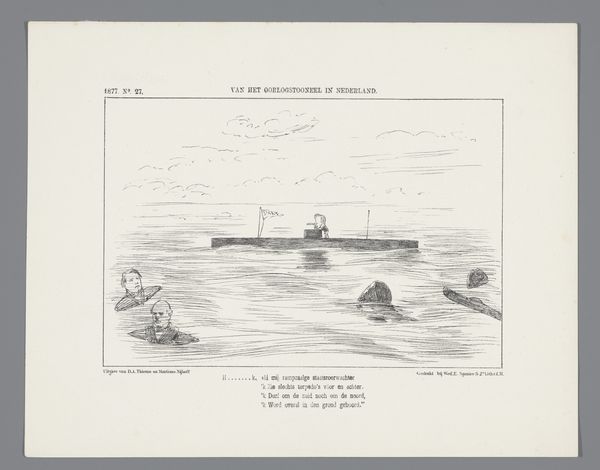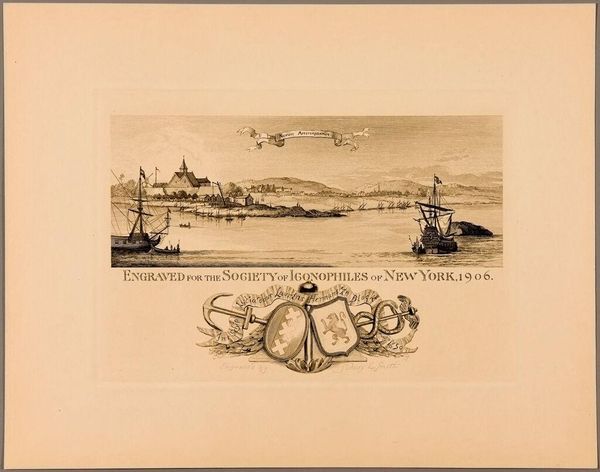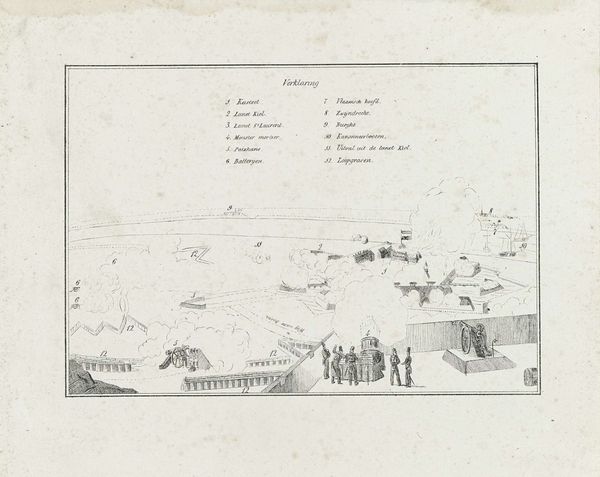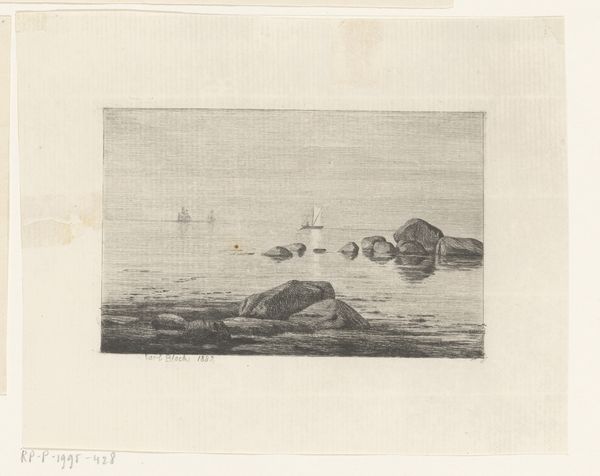
Spotprent op de door Heemskerk voorgestelde herindeling van Amsterdam, 1875 1875
0:00
0:00
Dimensions: height 215 mm, width 275 mm
Copyright: Rijks Museum: Open Domain
Curator: This print, titled "Spotprent op de door Heemskerk voorgestelde herindeling van Amsterdam," dated 1875, appears to be made with ink on paper, employing engraving techniques. It has a whimsical yet somewhat serious feel due to the presence of a ship and characters. How do you interpret the choice of materials and technique for a political commentary? Editor: Well, the detail achieved with engraving is quite impressive, considering the subject matter is the proposed redivision of Amsterdam by Heemskerk. It’s a pretty accessible medium, making it widely distributed. But why use such a traditional, almost historical medium for what's essentially a contemporary political issue? Curator: That's a perceptive question. Consider the social context: in 1875, printmaking, especially engraving, allowed for the relatively mass production and dissemination of imagery. Its accessibility as a medium ensured that political commentary could reach a broad audience. And by evoking historical visual tropes it encourages people to make connections between the current political events and history. What does the romantic style contribute to this narrative? Editor: So, the use of romanticism, with its emphasis on emotion and idealized forms, gives the subject a layer of nostalgia or perhaps satire? Making viewers reconsider a past? Curator: Exactly. The romantic style could soften the harshness of political critique, making the message more palatable, or, conversely, amplify the critique through ironic juxtaposition. It also speaks volumes about the intended audience: were they consumers of "high" art or the broader public? The choice of print and ink, alongside the visual language of Romanticism, reveals a deliberate strategy to engage with a specific demographic and shape public opinion regarding the proposed redivision. Did the materials and the image's composition influence how the message was received? Editor: It certainly makes me think about how political messages were communicated before mass media, and the deliberate choices in material and style! Thanks for highlighting these insights. Curator: And I, yours about connecting historical style to current consumption, shedding light on production and reception!
Comments
No comments
Be the first to comment and join the conversation on the ultimate creative platform.
